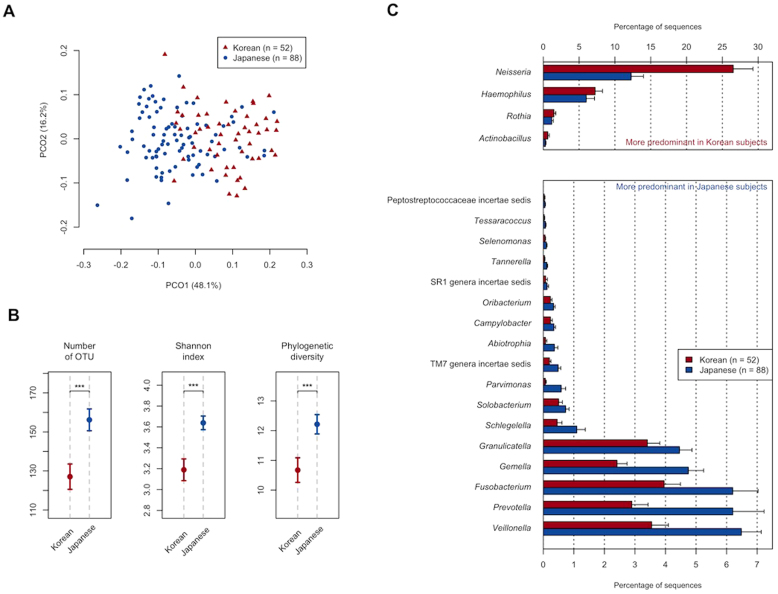Figure 1.
(A) Principal coordinate analysis (PCoA) plot showing similarity relationships among bacterial community samples from 140 orally healthy individuals (52 South Koreans and 88 Japanese) using the weighted UniFrac distance metric. To correct the unequal number of sequences, we evaluated it based on 1500 randomly selected sequences per sample. The two components explained 48.1 and 16.2% of the variance, respectively. Samples collected in the two countries are depicted using different colors and shapes. (B) Mean number of operational taxonomic unit (OTU), Shannon diversity index and phylogenetic diversity in the salivary microbiota of orally healthy individuals in South Korea (n = 52) and Japan (n = 88). To correct the unequal number of sequences, we evaluated each index of 1500 randomly selected sequences. The significance of differences was evaluated using Student's t-tests. The error bars indicate 95% confidence intervals. (C) Relative abundances of 21 bacterial genera that differed significantly between South Korean and Japanese orally healthy individuals (P < 0.05). The significance of differences was evaluated using Wilcoxon rank-sum test. The error bars indicate 95% confidence intervals.

